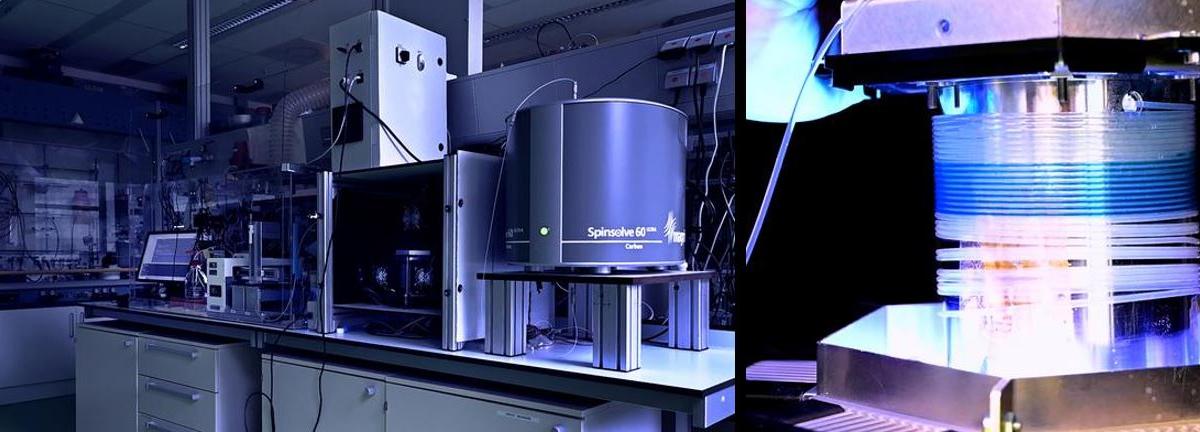They are emerging all over the world...
Conscientist
in the United States, Poderbot in the United Kingdom,
MicroLab
in France and
RoboChem
in the Netherlands, chemical robots are on the rise.
These machines carry out experiments on their own.
The practice is still embryonic but it is gradually taking hold in laboratories.
It couples artificial intelligence (AI) which
“thinks”
about developing a molecule with a robot which carries out the manipulations.
The AI directly analyzes the results of its experiments to adapt its protocol.
The efficiency and speed of these devices is quite astonishing, users assure.
RoboChem, one of the latest to make headlines, has determined optimal conditions for chemical reactions which have been compared to the results obtained by human beings.
“In about 80% of cases, the system produced better yields [than humans, Editor’s note].
For the remaining 20%, the results were similar,”
assures Timothy Noël, professor who led the RoboChem team at the University of Amsterdam, in a press release.
Also readHas chemistry lost the battle with drugs?
Businesses are very attracted by the time savings promised by these new technologies.
“Until now, 4 to 5 years of research elapsed between the start of an idea and the identification of a molecule to evaluate a new treatment for a disease in the clinic on volunteer patients,”
analyzes Laurent Schio , doctor in chemistry, head of the integrated drug research platform at Sanofi
.
“Exscientia, a British group which collaborates with Sanofi, has announced that it is capable of putting products into the clinical phase in 1 or 2 years thanks to AI.
»
“In one week, we can optimize the synthesis of around ten to around twenty molecules,”
promises Timothy Noël.
“This allows us to produce quantities that are directly relevant for suppliers in the pharmaceutical industry, for example
. ”
In addition to Exscientia, Sanofi also collaborates with a young French company, Aqemia.
“Their
technology makes it possible, on a digital interface (in silico), to evaluate ideas for molecules produced by researchers or by generative algorithms 10,000 times faster.
With these AI tools we were surprised to see the quality and originality of the molecules proposed,”
testifies Laurent Schio.
“But we still need to step back to assess the impact on our current research processes.”
How can we explain the success of these AIs?
For Laurent Schio,
“humans tend to stay in their knowledge zone when the robot explores all avenues.”
AI processes information in two different ways, either by iteration or by correction of its own algorithm (it corrects its way of doing things based on the results of its experiments, by learning).
The robot's strategy makes it possible to identify the optimal conditions for the manufacture of a compound such as reaction time, quantities of reagents, light, temperature, etc.
Working conditions
For Professor Timothy Noël,
“RoboChem produces a complete and exhaustive data set where all relevant parameters are obtained for each individual molecule.
This provides much more information [than studies carried out by humans, Editor's note].
»
The robot also takes into account negative results, which are rarely communicated by the scientific community and therefore little used despite their usefulness.
RoboChem
carries out chemical experiments requiring light (photocatalysis).
The technique is used in pharmaceuticals, agrochemistry and in the synthesis of materials.
But the molecules in the center of the reaction tube are less accessible to light than those stuck to the wall, which is the cause of inconsistent and unexplained variations between the results of the same two experiments.
RoboChem
carries out the same operation as humans but to the nearest millimeter and millisecond in order to limit the randomness linked to human manipulation and thus increase precision, particularly in the homogenization of light during the reaction.
Will humans become robot laboratory assistants?
“Human involvement was limited to the definition of the parameter space”
and
“the isolation of pure compounds
,” reports Timothey Noël, a laboratory technician working to prepare the stock solutions that are used by the robot. .
But AI conversely allows operators to be relieved of a tedious part of the analyses.
When researchers study, for example, the biological activity of a molecule, the analysis is simple in 95% of cases and can easily be entrusted to the machine, allowing them to concentrate on analyzing the remaining 5%, which is more problematic and requiring a more detailed study.
“It’s a gain in quality of work, simple repetitive tasks can be treated like when using a robot vacuum cleaner,”
believes Laurent Schio.
Laboratory working conditions will continue to change because tasks with low added value for humans will increasingly be entrusted to AI-enabled robots.

